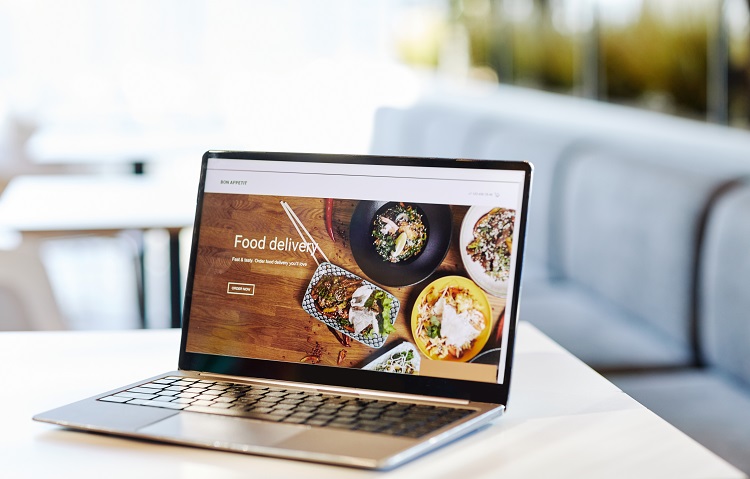Services List
This blog post shows you how easy it is to build a WordPress website. It’s simpler than you think, and comes with many built-in advantages. Read on to find out more.

WordPress has the majority market share of all internet websites, with or without a CMS (content management system), and it’s still growing. It boasts reliability, ease of use, and a devoted user base. So, it makes sense to run your website on WordPress.
With built-in plugin architecture and a template system, WordPress lets you tailor any website to best fit your online store, portfolio, blog, or business. And it’s easy to use. Let’s dive in by taking a look at the difference between Wordpress.org and WordPress.com.
WordPress.org
WordPress.org is free but more hands-on. It lets you host your own website or blog via a third-party hosting provider. It also means downloading WordPress software, buying, and setting up your domain name, and managing your server.
It comes with extra responsibility – uploading and installing plugins with a theme, editing code, and keeping tabs on security – and you need to pay for those services. Plus, your URL has a WordPress subdomain.
WordPress.com
Wordpress.com comes free or has a paid version. It hosts your website – with zero need for software downloading or server management. WordPress.com is perfect for a one-stop shop option that does the heavy lifting for you.
No need for server management paid hosting or domain buying, and you can tweak your website’s appearance to perfection with the paid plan’s customisable options.
The Beauty Of Blogging On WordPress
Paid or free, WordPress is ideal for blogging. Blogging refers to self-published online content like writing, photography or media. Originally “weblog”, the word has been shortened to “blog”. Blogs began as a kind of diary for writers, but it’s become a staple of business marketing and websites. It features informal language, is frequently updated, and gives readers the chance to engage in conversation and comment, letting them form communities.
Blogs have many functions. They can be used for marketing products and services, or they can be home businesses by themselves. Blogging allows interlinking, which is when one blogger links to another person’s blog within their own post. And the comment section option bolsters the sense of community among readers.
One of the best things about blogs is that you can update them often. New content can be added several times a week. Whereas websites mostly offer static, unchanged information.
Another benefit is reader engagement. In this way, blogs and social media are similar in that they connect the content creator with their audience. Interaction and mutual dialogue is key here. So let’s start the process of building a WordPress website.

Steps To Build A WordPress Website
- Choose a WordPress plan from the five options offered by WordPress.com. The plan differences include the monthly charge, the kinds of marketing tools on offer, and the kinds of site modifications.
- Establish the name of your domain (website address) and choose your hosting provider (your website’s home) – these usually happen simultaneously. A domain name is your brand and how your users identify you. Make it short, unique and easy to spell, and make sure it stands out. You get a domain name from a domain registrar like Afrihost. If you already have one, you will be able to map or transfer it to your WordPress website.
Some good hosting providers are xneelo, domains.co.za and Bluehost. Your hosting provider affects the dependability, safety, and speed of your website. Some companies offer web hosting AND domain name registration.
- To install WordPress, you’ll need to set up a CMS (content management system) if you’re using a hosting provider outside WordPress. This process is similar no matter what hosting provider you use. If you’re using a WordPress hosting service, you won’t need to do this.
You’ll need to wait a day for your website to be installed to your hosting account. Once that’s done, you need to set up your primary domain in WordPress.
- Next step: choosing your theme. This means choosing fonts, colours, layouts and styles. You can choose WordPress’ default theme, or you can go with a more personalised option. This depends on what you’re using your website for: business, blog, ecommerce or simply journaling.
There are third-party sites offering free and premium themes to augment the appearance and functionality of your website, while still keeping the integrity of your content.
- To create content for your website, you’ll be adding posts and pages. You can use post titles and add photos, alter format and add page elements using blocks and shortcodes.
- To further customise your website, select your site title, navigation bar, URL, time zone and email info, or change your home page to static (good for businesses) or dynamic (good for blogging).
- To install plugins (software that bolsters use experience and increases website functionality), go here, or choose Yoast SEO. The choice is wide, so choose what works best for you.
- Page speed influences WordPress website performance. If users get irritated by a delay in page loading, they will click on to another website. One way to increase speed is to enable browser caching, which briefly stores your website info on user’s browsers.
Caching prevents the need for content to be directed from the web server to show in the browser. Use a caching plugin to enable caching to make your website faster and improve loading time.
- It takes time to personalise a website, and you may get stuck with ideas. So have a look at other WordPress websites and get inspired by them. You can find good examples here.
Here are some added tips to best optimise your WordPress website for a seamless user experience:
- WordPress’ support page and contact list is designed to help you get the most out of your WordPress experience. Go here for further tips on WordPress assistance and help forums.
- You can use Image Alt Text to bolster SEO rankings, and avoid underscores to name WordPress files, as Google sees them as joiners (your file looks like one long word). Rather use dashes to improve SEO scores.
- To break up your website’s text, use pics and visual content as often as possible. The internet is a visual medium after all.
- It’s important to back up your website every so often so you don’t lose your content. Go here for some backup tools.
- Evaluate your website’s performance and user experience by consulting Google Analytics or other plugin tools so you can improve it.
- Permalinks (the permanent URLS you intend to keep static) strengthen SEO and user experience.
- Make your WordPress hack-proof by using security plugins.
- Customise your website for each user – it makes sense to use posts for blogging, and pages for business.
- Increase your legitimacy/dependability status by having an “About Us” website page so users get an idea of who you are and why they should trust you.
- Install WordPress updates frequently so that your website works properly and looks good.
- Think about what your website looks like on a smartphone. Most people surf the net on their phones, so use a plugin to optimise your website for smartphones.

The Advantages Of WordPress
The advantages of WordPress are many. Simple to use and easy to install, you don’t coding skills. It’s made for beginners and professionals. WordPress’ design, tutorials and directions are intuitive. It comes with a free or paid option – and the paid option is good value for money.
WordPress has been created with search engines and SEO in mind and is friendly to both. It’s easy for search engine traffic to crawl through and parse your content. It’s also responsive to different devices – smartphones, tablets, PC, you name it, and it looks good on everything. And all you need to use WordPress is an internet connection to access it, so it’s perfect for mobile working and digital nomads.
Updates are quick and automatic, and WordPress lets you update its CMS with the click of a button. There are so many plugin options, you can personalise your website to your heart’s desire. From marketing to security, speed to design, you are spoiled for choice.
You can niche your website theme exactly how you want it, fit for purpose, and WordPress websites come with a blogging component for extra content. It boasts flexibility and functionality, and you can make changes to your website immediately.
Backed by a large community of users, and a wide base of support forums, WordPress has pinned answers to frequently asked questions on its help page, so troubleshooting is pain-free. Its open-source code base is public and transparent. And scalability doesn’t come with a cost to performance.
WordPress comes with different permission and permission levels to protect backend data and prevent hacking.
In short, WordPress is ideal for building cutting-edge internet websites. So what are you waiting for? Start building your one today!


